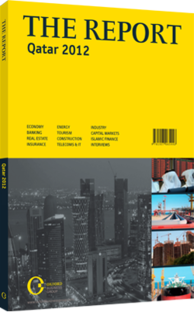International appeal: The sector is host to a diverse group of foreign players
Key to Qatar’s crowded banking sector is its foreign bank branches. By year-end 2011, these lenders held QR32.2bn ($8.8bn) in assets, equivalent to a 4.8% share of the market, down from 7.7% in 2010. Nonetheless, foreign banks have achieved notable success in the country in the long run, with the segment achieving a 12.7% compound annual growth rate in assets between 2007 and 2010.
MARKET LEADER: The leading foreign bank in terms of market share is HSBC Qatar, which in 2011 had assets of QR17.5bn ($4.8bn), equivalent to 54.4% of assets held by foreign lenders, or 2.6% of the overall market. Customer deposits stood at QR10.1bn ($2.8bn), a reduction of 9.5% from the prior year. Net profit amounted to QR360.3m ($98.9m), a decline of 19%.
Arab Bank was the second-largest foreign lender in terms of assets at QR4.5bn ($1.2bn), down 24% from 2010, but saw total loans and advances rise by 2.9%. Its customer deposits also increased by 2.4% in 2011, reaching QR2.9bn ($796.3m). Over the same period, net profits declined to QR120.7m ($33.1m), down 9.2% from the prior year. The third-largest lender was BNP Paribas, with assets of QR2.3bn ($631.6m), 14.5% down from 2009. Loans meanwhile declined 25.1% to QR628m ($172.4m), while deposits fell to QR1.6bn ($439.4m). Net profit was down by 6.5% to QR69.2m ($19m).
The fourth-largest foreign bank as measured by assets in 2011 was Standard Chartered, with QR3.2bn ($878.7m), down 59.1% on 2010. Total loans for 2011 stood at QR898m ($246.6m), down 22.1% on 2010, while customer deposits amounted to QR2.2bn ($604.1m), an increase of 10.2% over 2010. Net profit in 2011 fell by 79.1% to QR23m ($6.3m). Mashreqbank was just behind Standard Chartered, accounting for 9.9% of the foreign lender market as measured by assets. While the bank’s total assets fell in 2011, loans increased by 1% to reach QR1.6bn ($439.4m). Deposits exhibited healthy growth, rising by 18.9% to reach QR1.9bn ($521.7m). However, profits fell steeply, declining to QR23.6m ($6.5m) from QR53.3m ($14.6m).
Sixth largest was United Bank, with assets of QR716m ($196.6m) as of the end of 2011. This represented a decline of 12.5% from QR818m ($224.6m), with loans similarly falling by 23% in 2011, reaching Q351m ($96.4m). Net profits meanwhile stood at QR20.8m ($5.7m), down 5.8% on 2010. Finally, Bank Saderat may be the smallest of the foreign lenders – with assets standing at QR744m ($204.3m) at the end of 2011 – but it was the only one of the foreign banks to exhibit growth in assets between 2010 and 2011, ending the year up by 3%. Loans stood at QR302m ($82.9m), an increase of 41.9%. Similarly, net profits grew by 37.7% in 2011, to reach QR37.7m ($10.4m).
CHALLENGES: As the data suggest, foreign lenders experienced some challenges in 2011, with assets and profits generally falling. There are a few possible explanations for this, such as increased price competition in the sector, which favours larger domestic players, and difficult conditions in their home markets. “A lot of the European banks that have previously participated in project financing in the GCC are pulling out, and I expect a lot of the Asian banks to step up and fill in the gap the European banks have left behind,” said Robin McCall, the CEO of Khaliji Bank.
Limits on loans and interest charges introduced by the Qatar Central Bank (QCB) in April 2011 also affected foreign banks, which tend to focus on consumer banking. The new restrictions include a loan limit of $549,000 for Qatari nationals and $110,000 for expatriates, with a maximum repayment period of 72 months for nationals and 48 months for expatriates. At the same time, the QCB set the maximum interest rate at the QCB lending rate plus 1.5 percentage points for loans to nationals and expatriates alike.
However, foreign banks could reposition themselves to attract more clients. With $130bn of project financing available, and GDP growth expected to remain high, the Qatari market continues to attract foreign banks.
A period of refocusing, producing a slimmer but more profitable foreign sector may therefore lie ahead.
You have reached the limit of premium articles you can view for free.
Choose from the options below to purchase print or digital editions of our Reports. You can also purchase a website subscription giving you unlimited access to all of our Reports online for 12 months.
If you have already purchased this Report or have a website subscription, please login to continue.

